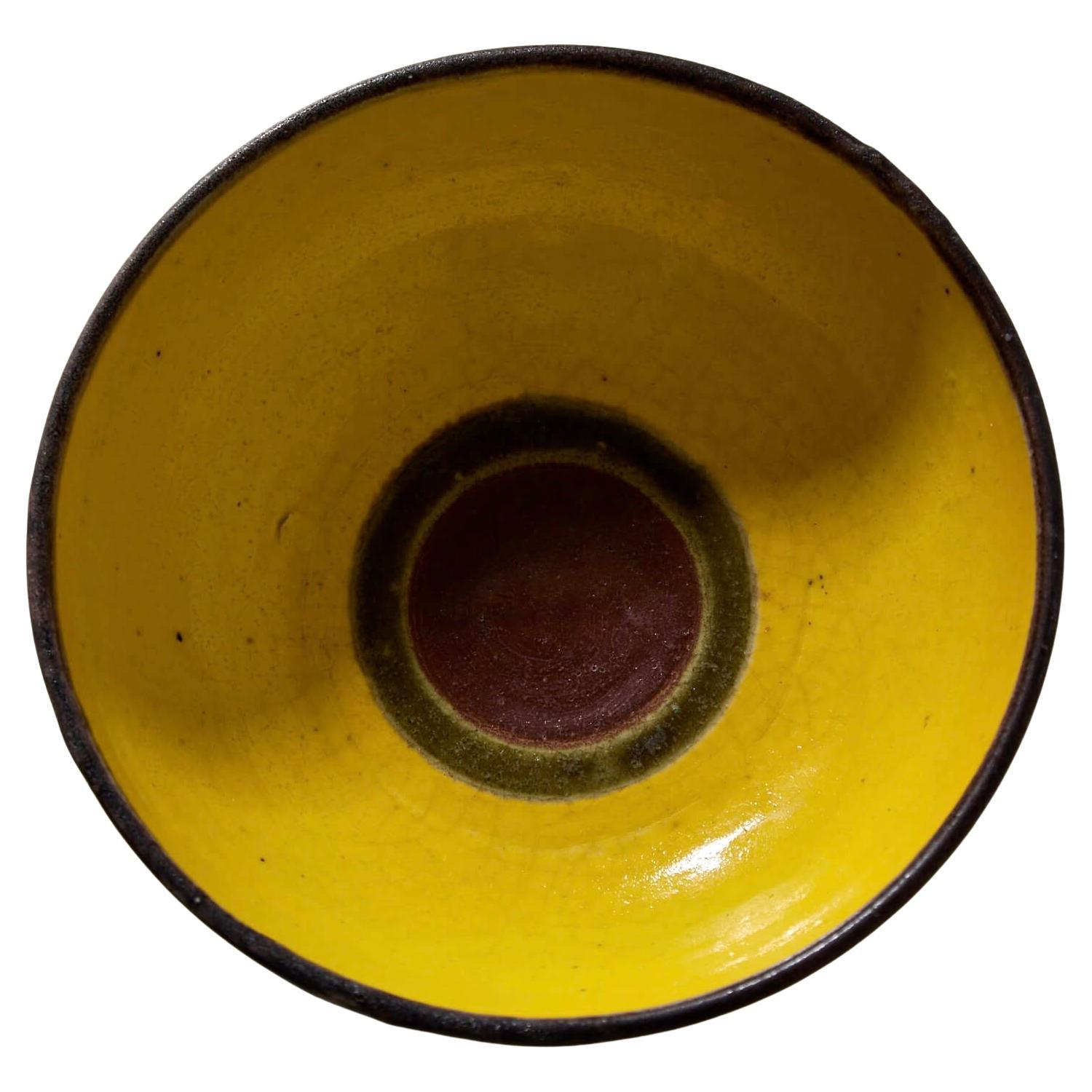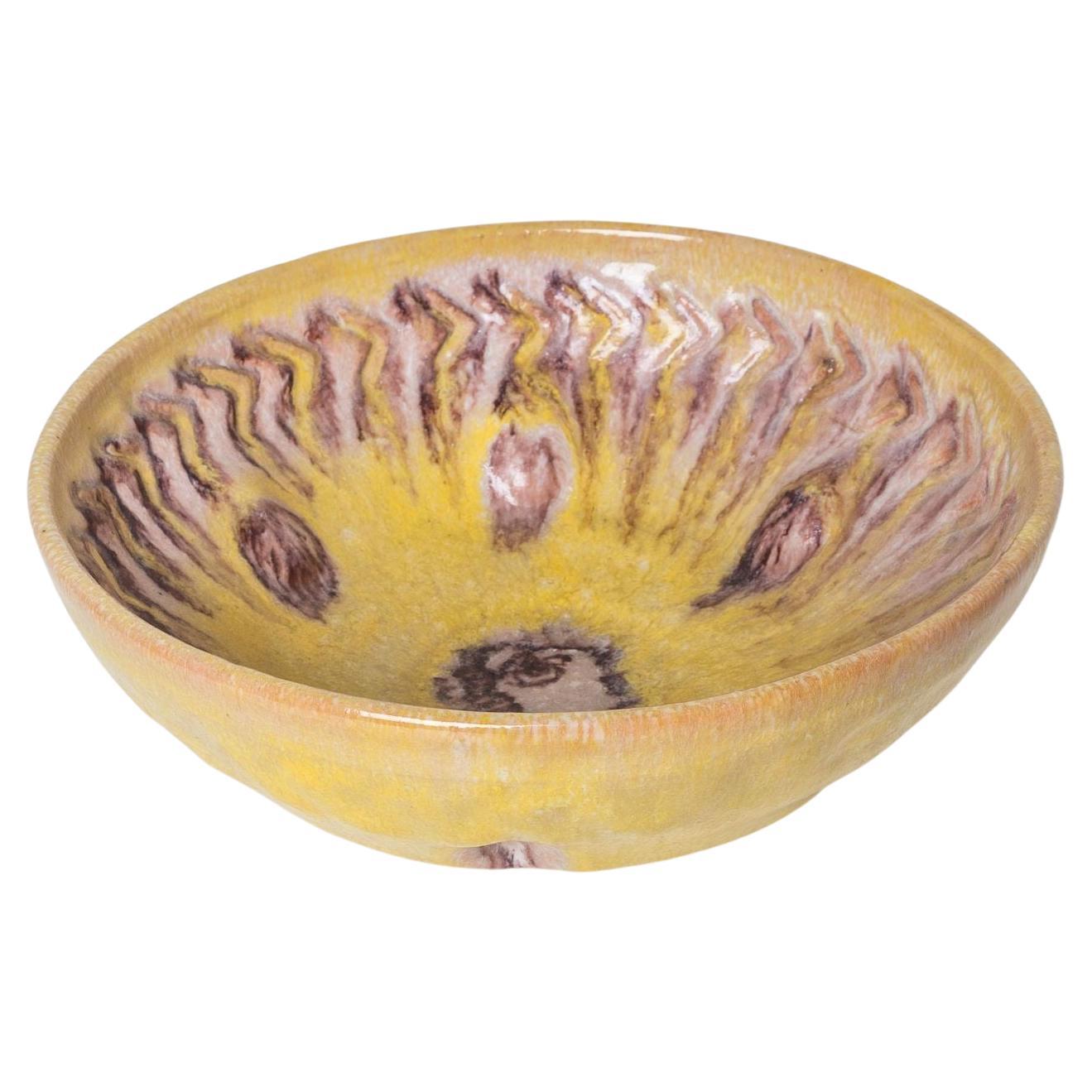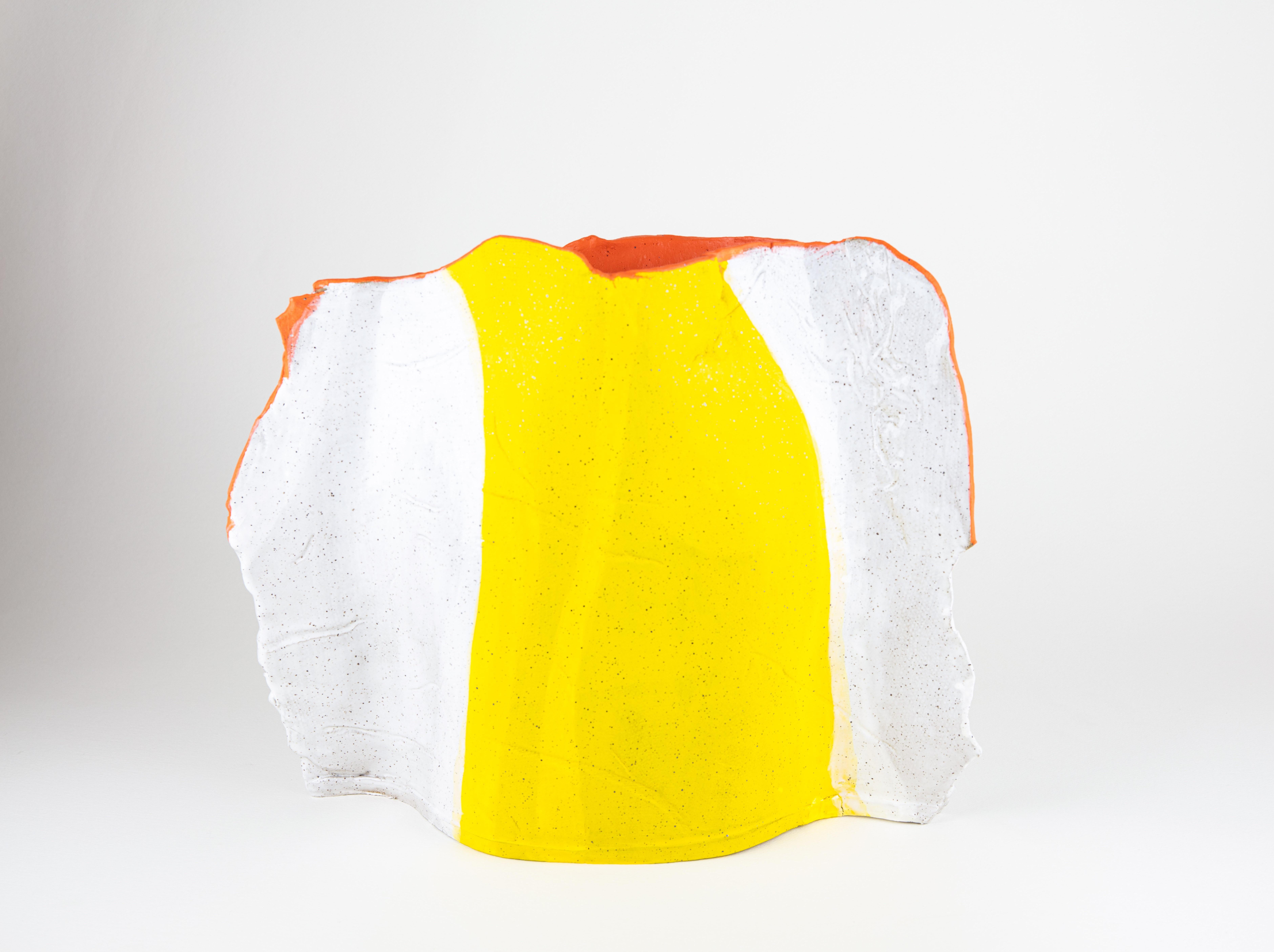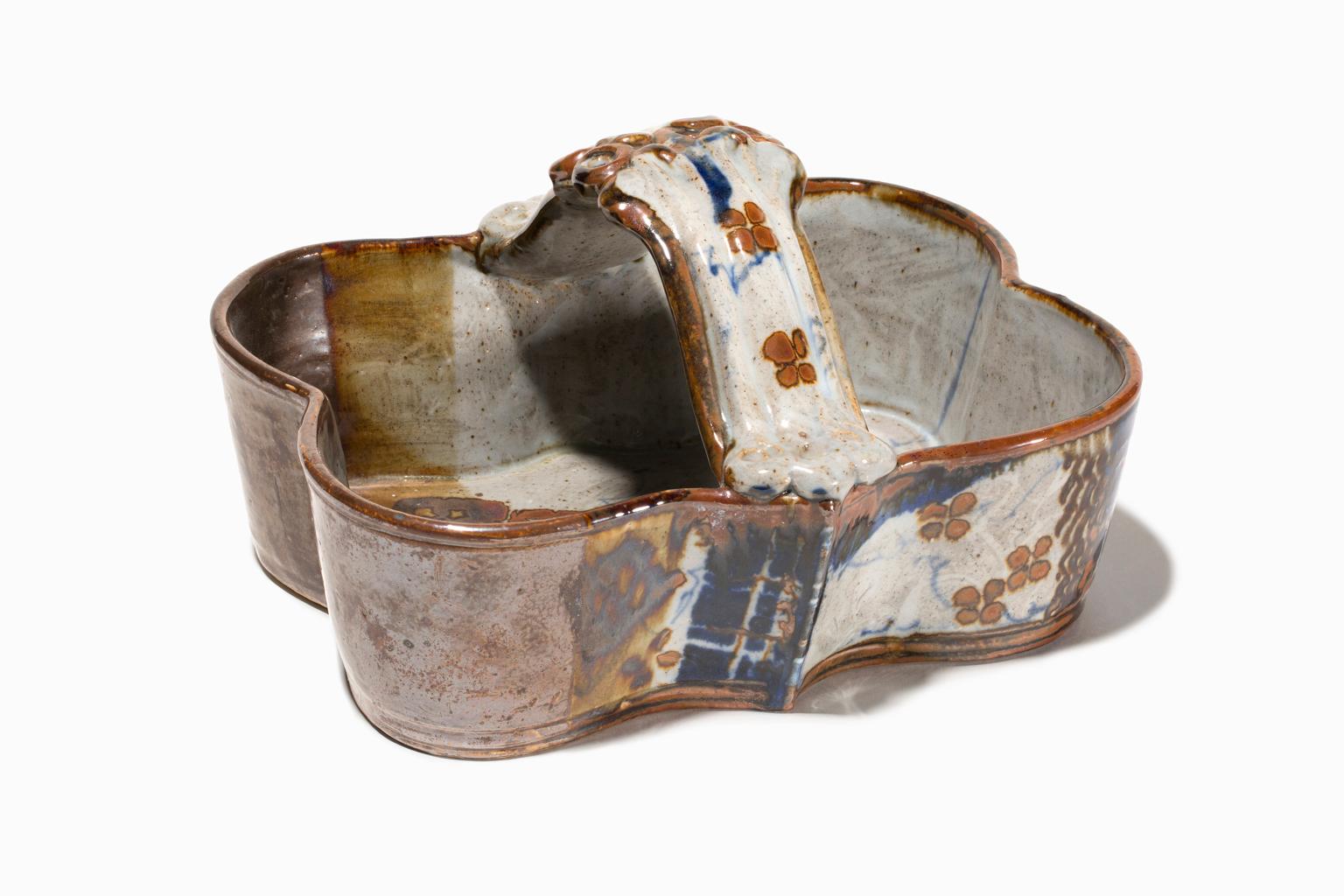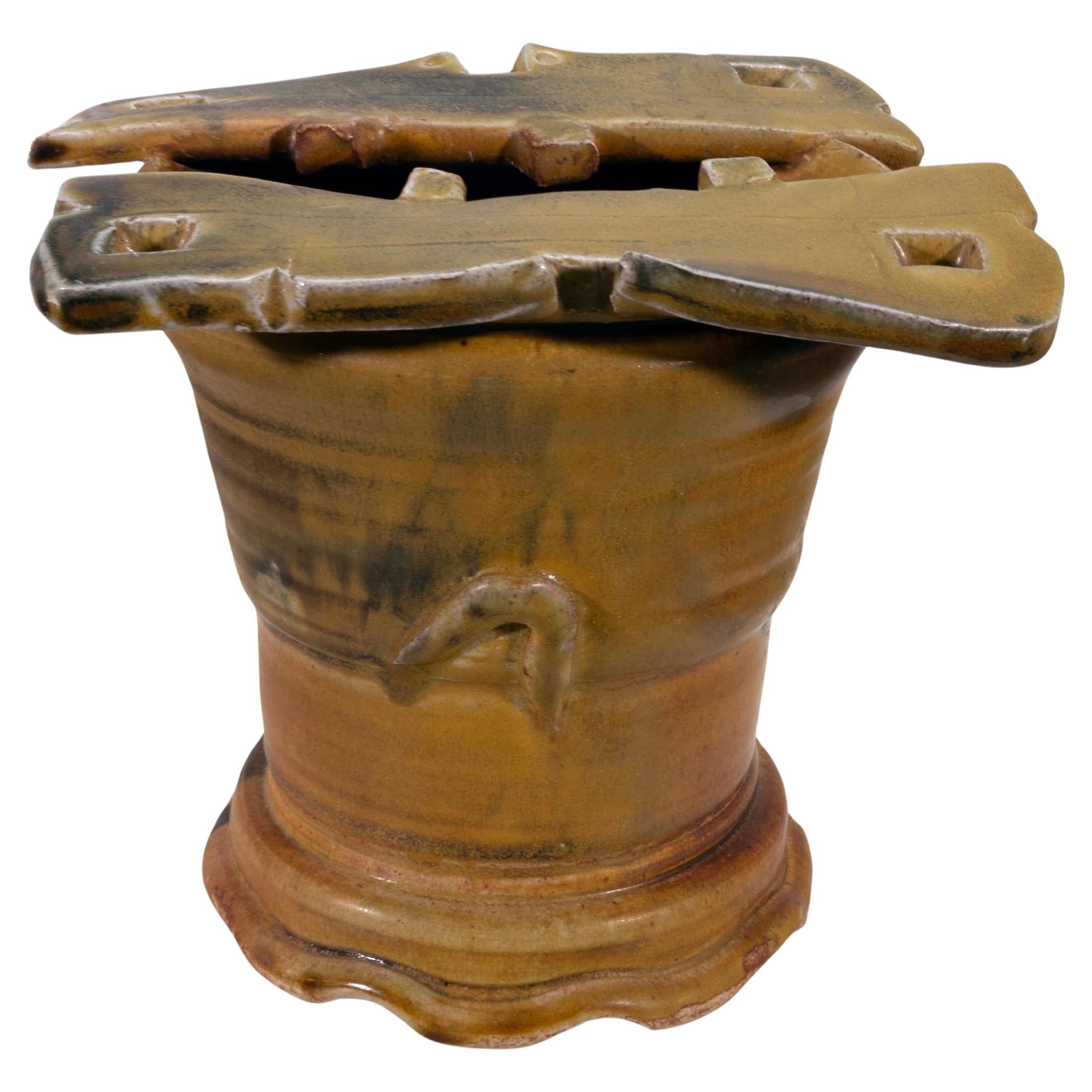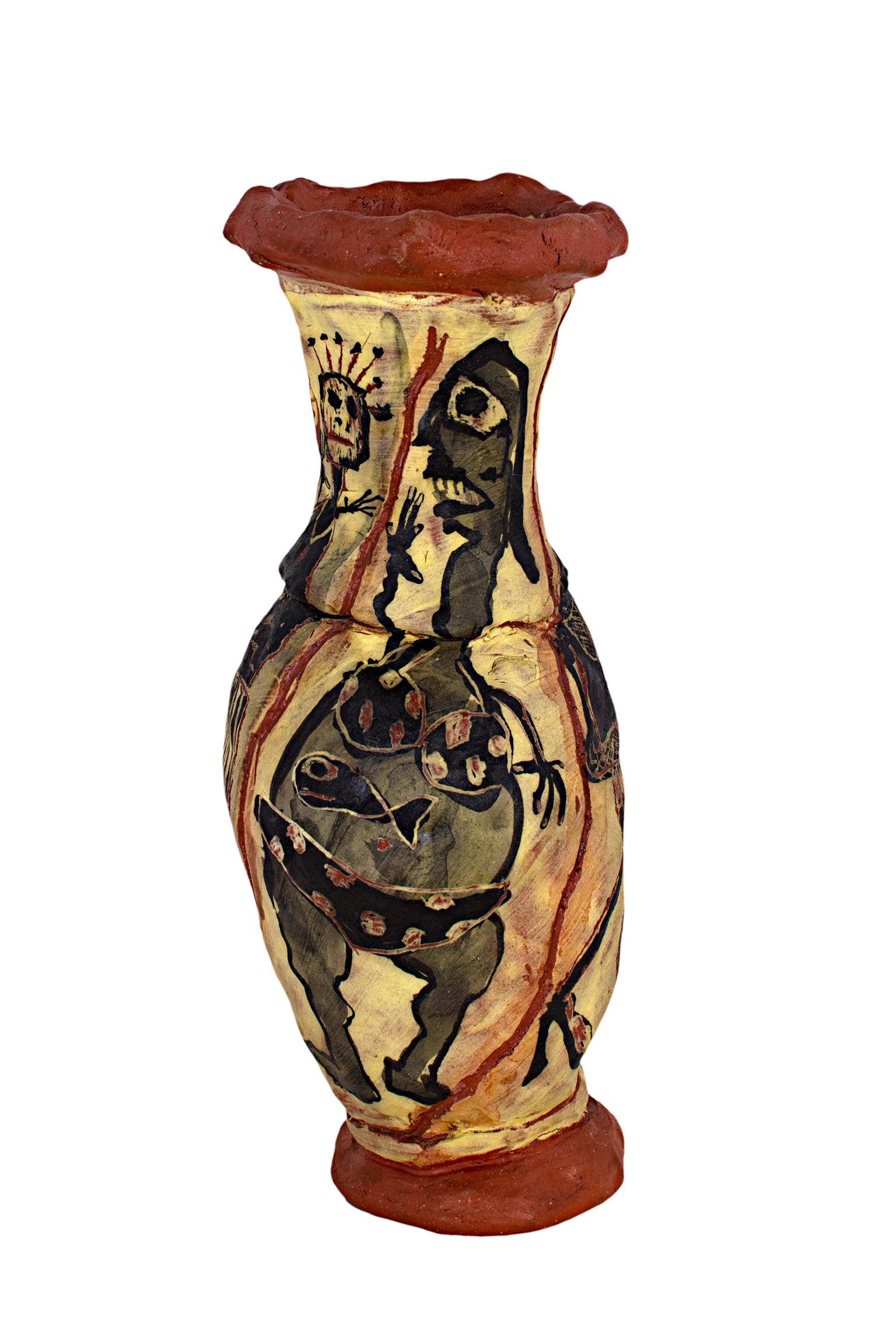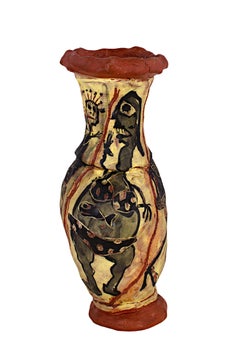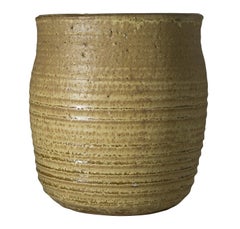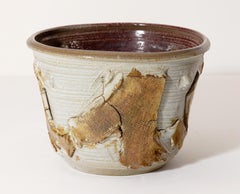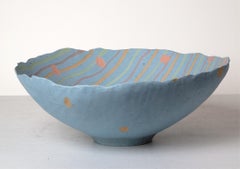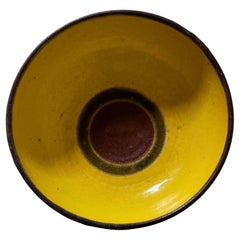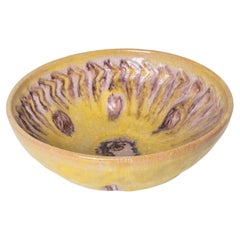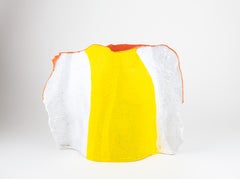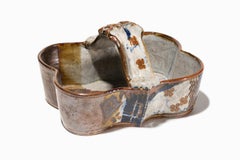Items Similar to "Basket Weave Bacon Bowl, " Yellow Ceramic with Bacon signed by Michael Gross
Want more images or videos?
Request additional images or videos from the seller
1 of 6
Michael Gross"Basket Weave Bacon Bowl, " Yellow Ceramic with Bacon signed by Michael Gross1985
1985
$1,100
£836.37
€963.51
CA$1,563.91
A$1,699.70
CHF 898.23
MX$20,562.73
NOK 11,186.77
SEK 10,566.60
DKK 7,193.72
About the Item
"Basket Weave Bacon Bowl" is an original ceramic by Michael Gross. The artist signed and dated the piece on the bottom. It features images of bacon on yellow.
8 1/2" x 9 1/2" x 6" art
The ceramic sculptures of Wisconsin artist Michael Gross are personal narratives that reveal an unusual mix of earthly magic and primal vitality. The artist works in a variety of forms, including figurines, large vessels and furniture. With over a dozen museum exhibitions under his belt, the artist is a regular exhibitor at SOFA in New York and has received a Wisconsin Arts Board fellowship.
SELECTED COLLECTIONS:
Sharon Lynne Wilson Center for the Arts, Brookfield, WI (Commission); Arkansas Art Center, Little Rock, AR; Racine Art Museum, Racine, WI; Everson Museum, Syracuse, NY
- Creator:Michael Gross (1920 - 2004, Israeli)
- Creation Year:1985
- Dimensions:Height: 8.5 in (21.59 cm)Width: 9.5 in (24.13 cm)Depth: 6 in (15.24 cm)
- Medium:
- Movement & Style:
- Period:
- Condition:
- Gallery Location:Milwaukee, WI
- Reference Number:Seller: 1286d1stDibs: LU60533170271
About the Seller
4.9
Gold Seller
Premium sellers maintaining a 4.3+ rating and 24-hour response times
Established in 1966
1stDibs seller since 2017
451 sales on 1stDibs
Typical response time: 2 hours
- ShippingRetrieving quote...Shipping from: Milwaukee, WI
- Return Policy
Authenticity Guarantee
In the unlikely event there’s an issue with an item’s authenticity, contact us within 1 year for a full refund. DetailsMoney-Back Guarantee
If your item is not as described, is damaged in transit, or does not arrive, contact us within 7 days for a full refund. Details24-Hour Cancellation
You have a 24-hour grace period in which to reconsider your purchase, with no questions asked.Vetted Professional Sellers
Our world-class sellers must adhere to strict standards for service and quality, maintaining the integrity of our listings.Price-Match Guarantee
If you find that a seller listed the same item for a lower price elsewhere, we’ll match it.Trusted Global Delivery
Our best-in-class carrier network provides specialized shipping options worldwide, including custom delivery.More From This Seller
View All"Untitled Vase, " Neo-Expressionist Ceramic Vase signed by Michael Gross
By Michael Gross
Located in Milwaukee, WI
"Untitled Vase" is an original ceramic vase by Michael Gross. It features abstracted and grotesque figures on a yellow ground.
11 1/2" x 4 1/2" art
The ceramic sculptures of Wisconsin artist Michael Gross are personal narratives that reveal an unusual mix of earthly magic and primal vitality. The artist works in a variety of forms, including figurines, large vessels and furniture. With over a dozen museum exhibitions under his belt, the artist is a regular exhibitor at SOFA in New York...
Category
1980s Neo-Expressionist Figurative Sculptures
Materials
Ceramic
"Bowl (Olive Green), " Hand Thrown Ridged Stoneware signed by Mark Shekore
By Mark Shekore
Located in Milwaukee, WI
"Bowl (Olive Green)" is a hand-thrown glazed stoneware bowl made by Mark Shekore, signed with his last name on the bottom of the piece.
9 1/8" x 8" diameter
Mark Shekore attended ...
Category
1960s Post-Modern More Art
Materials
Stoneware
'Bowl' Wheel Thrown Glazed Stoneware signed by Dennis McLaughlin
Located in Milwaukee, WI
Glazed stoneware, wheel thrown with hand-built slabs, signed on the bottom by Dennis McLaughlin.
7' x 10" diameter
McLaughlin’s artistic sensibilit...
Category
1960s More Art
Materials
Ceramic, Stoneware, Glaze
Ceramic Bowl, signed by artist
Located in Milwaukee, WI
Ceramic Bowl, signed by artist.
16.5" x 18"
Category
1980s Sculptures
Materials
Ceramic
"Raku Vase with Concentric Rings, " Ceramic signed by Marty Marcus
By Marty Marcus
Located in Milwaukee, WI
"Raku Vase with Concentric Rings" is a ceramic piece signed on the bottom by the artist Marty Marcus. The vase has a variety of gorgeous color variations.
7 1/4" height; 8 1/2" dia...
Category
1980s Sculptures
Materials
Ceramic
'Bowl' Hand Thrown Glazed Stoneware signed by Mark Shekore
By Mark Shekore
Located in Milwaukee, WI
'Bowl' is an original glazed stoneware by Mark Shekore. The artist signed the piece on the bottom.
It is 8" tall and has a diameter of 6 1/2".
Mark Shekore attended the Universit...
Category
1960s More Art
Materials
Ceramic, Stoneware, Glaze
You May Also Like
Bruno Gambone Yellow Ceramic Bowl
By Bruno Gambone
Located in Long Island City, NY
With its saturated sunflower yellow and dark-tipped rim, this bowl is a beautiful statement of Gambone’s craft in the 1960s.
Bruno Gambone (b. 1936) began his artistic career early ...
Category
Vintage 1960s Italian Decorative Bowls
Materials
Ceramic
Guido Gamboni Yellow Bowl
By Guido Gambone
Located in Chicago, IL
Small ceramic bowl from the great master and innovator of modern Italian ceramics, Guido Gambone. Signature and Gambone donkey mark on bottom. Bottom ha...
Category
Vintage 1940s Italian Modern Pottery
Materials
Ceramic
Bark Vessel, Abstract ceramic sculpture, yellow and white
By Rachelle Krieger
Located in New York, NY
Artist Statement by Rachelle Krieger:
These new ceramic sculptural works are a reflection of biodiversity and vitality, capturing natural elements in various stages of life. During ...
Category
2010s Contemporary Still-life Sculptures
Materials
Wire
Breathtaking John Glick "Scalloped Basket" Glazed Stoneware Reduction Fired
Located in Detroit, MI
"Scalloped Basket" is a stoneware piece with the decorative layer of the rich toned glazes and markings that John was so well-known for. He was, also, known for the undulating lip lines on his exquisite pieces. The basket portion is shaped with gentle curves and a sculptural handle. Each piece that John produced was unique. He was seduced by the effects of the reduction kiln, which decreased the levels of oxygen during firing, inducing the flame to pull oxygen out of the clay and glazes changing the colors of the glazes depending on their iron and copper content. In this way he achieved the rich gradients of ochre and umber and variations in stippling and opacity. This particular "basket" also has the cool blues and grays that contrast with the umber. It is signed and stamped on the bottom.
John was an American Abstract Expressionist ceramicist born in Detroit, MI. Though open to artistic experimentation, Glick was most influenced by the styles and aesthetics of Asian pottery—an inspiration that shows in his use of decorative patterns and glaze choices. He has said that he is attracted to simplicity, as well as complexity: my work continually reflects my re-examination that these two poles can coexist… or not, in a given series. Glick also took influences from master potters of Japan, notably Shoji Hamada and Kanjrio Kawai, blending their gestural embellishments of simple forms with attitudes of Abstract Expressionism. He was particularly drown to the work of Helen Frankenthaler whose soak-stain style resonated with Glick’s multi-layered glaze surfaces, which juxtaposed veils of atmospheric color with gestural marks and pattern. He spent countless hours developing and making his own tools in order to achieve previously unseen results in his work with clay and glaze.
Glick’s “Plum Tree Pottery...
Category
1970s American Modern Abstract Sculptures
Materials
Stoneware, Glaze
John Glick Ceramic Stoneware Rare Yellow Vase Signed
By John Glick
Located in Keego Harbor, MI
A modernist stoneware glazed rare ceramic vase by Detroit artist John Glick of Plum Tree Pottery. Circa late 20th century. Glazed in earthtones. Artisisnal yet functional and makes a...
Category
Late 20th Century American Pottery
Materials
Pottery
1970s Gainey Mustard Yellow Glazed Ceramic Planter
By Gainey Pottery
Located in Glendale, CA
1970s Gainey Mustard Yellow Glazed Ceramic Planter.
Executed in matte mustard yellow glazed ceramic. A very clean and increasingly rare example attributed to iconic ceramics manufac...
Category
Vintage 1970s American Mid-Century Modern Planters and Jardinieres
Materials
Ceramic
More Ways To Browse
Ceramic Artists Sculpture
Ceramic Bowl Yellow
Michael Bowles Art
Basket Weave Ceramic
Basket Weave Bowl
Michael Gross Ceramic
Neo Expressionist Ceramic
Frans Van Straaten
Gold Raven
Jerusalem Stone
Jules Desbois
Kaws Bff Blue
La Provence De Pierre Deux
Nichola Theakston
Outdoor Nude
Panthere Figurative
Pest Control Banksy
Rene Murray
